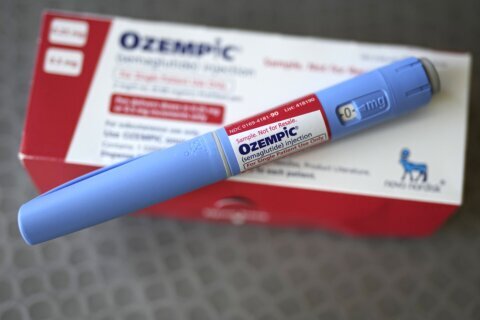Big news comes in a very small package for the more than 200,000 Americans who get a pacemaker each year to treat slow or irregular heart rhythms.
Last week, the U.S. Food and Drug Administration approved the Aveir DR Dual Chamber Leadless Pacemaker System, the first model of its kind, made by Abbott.
Each pacemaker is smaller than a AAA battery.
Unlike earlier pacemakers, which required implanting a small metal unit in a pocket created under the skin on a patient’s chest, in 2016 the FDA approved the first leadless pacemaker, which is a self-contained, inch-long device implanted in the right ventricle chamber of the heart.
Leadless pacemakers, including the Aveir, are placed directly in the heart using a small tube through a blood vessel in the leg.
“A dual chamber leadless pacemaker is a revolution,” said Dr. Cyrus Hadadi, a clinical cardiac electrophysiologist and associate director of cardiac arrhythmia research at MedStar Washington Hospital Center, which implanted the Aveir device in six patients during clinical trials.
“You have two units — one in the top right chamber of the heart, and one in the bottom right — with no wires, talking with one another to maintain the hearts natural rhythm,” said Hadadi.
While current single-chamber leadless units are only appropriate for certain conditions, Hadadi says the new dual chamber system will greatly widen the number of patients who can be treated with the wireless technology.
“The top right chamber of your heart is the natural pacemaker. So, for the first time, you can put a (leadless) pacemaker in that top right chamber to maintain the heart’s natural rhythm [from the] top chamber squeezing, followed by bottom chamber squeezing,” said Hadadi.
Batteries included, but they don’t last forever
The two components in the Abbott unit “communicate with one another through your bloodstream itself,” through a technology called implant to implant, or “i2i,” said Hadadi. The proprietary technology uses far less battery current than inductive, radio frequency or Bluetooth communication, according to Abbott.
“The battery life on this dual chamber leadless pacemaker is, in many cases, better than that of an old-fashioned traditional pacemaker — up to 8, 10, or 12 years,” said Hadadi.
The battery life of the pacemaker is partially determined by how often the unit paces.
“Some of us only need a little bit of pacing from time to time, and others of us, unfortunately, have to be paced 100% of the time,” said Hadadi. “As you can imagine, that’s going to use up your battery rate a little bit differently.”
With some earlier leadless pacemakers, when a battery’s life is wearing down, the original implant is left in the heart, and simply turned off, when a second unit is placed.
Hadadi said Aveir wireless pacemakers are designed to be removed and replaced when the battery life is ending.
“So now, after 10 or 12 years, when the battery has run out, in an outpatient procedure, your cardiologist can remove it from your body and place a new one in its place,” he said.
Hadadi said several of the patients in the trial were under the age of 30, who will likely need several replacement units over their lifetime.
“Now, we can tell you, instead of having three, four, five, six or seven old devices in your heart, when your battery runs out, we can smoothly and safely take out the old Aveir, and put a new one in.”
Hadadi said given the success in the MedStar Health clinical trials — and now the FDA’s approval, they hope it’s only “a very brief time period until it’s actually commercially available for our patients.”








